Dear Z, Today’s Lovers’ Chronicle from Mac Tag to his Muse. Rhett
The Lovers’ Chronicle
Dear Muse,
© copyright 2020 mac tag/cowboy coleridge all rights reserved
© copyright 2019 mac tag/cowboy coleridge all rights reserved
the first time
She came to me
i was asleep
in my bed
i felt Her lay
next to me
i felt Her hands
runnin’ up and down
my body
i was instantly
aroused
as never before
when She was through
with me, She left me
in a cold sweat
wantin’ more
© copyright 2018 mac tag/cowboy coleridge all rights reserved
on the border of the Llano,
down by the river,
late at night
you can still hear Her
a moan, a sigh, a cry
some say it is the wind
or coyotes
but i believe
in the weepin’,
in La Llorona
i believe grief
is strong enough
to make the livin’
and the not,
do things
that cannot
be explained
and i know this,
from a lifetime
of intimate dances,
you cannot outrun it
© copyright 2017 mac tag/cowboy Coleridge all rights reserved
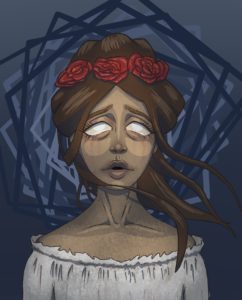 In Mexican folklore, La Llorona (American Spanish: [la ʝoˈɾona]; “The Weeping Woman” or “The Wailer”) is a vengeful ghost who roams waterfront areas mourning her children whom she drowned.
In Mexican folklore, La Llorona (American Spanish: [la ʝoˈɾona]; “The Weeping Woman” or “The Wailer”) is a vengeful ghost who roams waterfront areas mourning her children whom she drowned.
The legend has a wide variety of details and versions. In a typical version of the legend, a beautiful woman named María marries a rich ranchero / conquistador to whom she bears two children. One day, María sees her husband with another woman and in a fit of blind rage, she drowns their children in a river, which she immediately regrets. Unable to save them and consumed by guilt, she drowns herself as well but is unable to enter the afterlife, forced to be in purgatory and roam this earth until she finds her children. In another version of the story, her children are illegitimate, and she drowns them so that their father cannot take them away to be raised by his new wife. Recurring themes in variations on the La Llorona myth include a white, wet dress, nocturnal wailing, and an association with water.
The mother archetype of La Llorona has been tied to patriarchal expectations of women in Mexican culture by several authors, historians, and social critics. Social critics often consider Mexican (and Mexican-American) culture to force patriarchal standards onto women, such as being defined by their roles as mothers. La Llorona’s falling into the trope of an “evil” or “failed” mother, having either committed infanticide or having failed to save them from drowning, can be considered a reflection of this.
You know that I am all about celebratin’ beauty in whatever form it manifests itself, so today’s letter features more art, poetry and a famed beauty born in 17th century England.
| Pontormo | |
|---|---|

Illustration from “Lives of the Most Excellent Painters, Sculptors, and Architects” by Giorgio Vasari, edition of 1568.
|
|
Today is the birthday of Jacopo Carucci (Pontorme, May 24, 1494 – January 2, 1557 Florence), usually known as Jacopo da Pontormo, Jacopo Pontormo or simply Pontormo; Italian Mannerist painter and portraitist from the Florentine School. His work represents a profound stylistic shift from the art of the Florentine Renaissance. He is famous for his use of twining poses, coupled with ambiguous perspective; his figures often seem to float in an uncertain environment.
Gallery

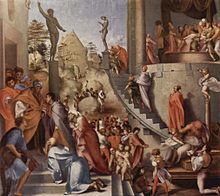



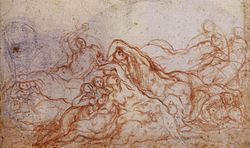
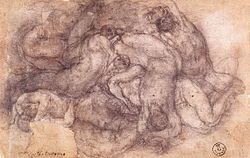
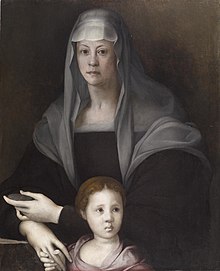

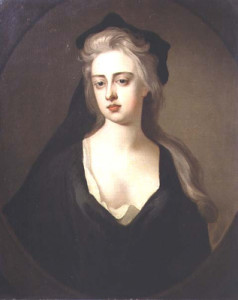 On this day in 1725, Jane Leveson-Gower Hyde passed away. She was known as a famous beauty celebrated by her contemporaries. The author Jonathan Swift referred to her as “my principal goddess.” Others called her “majestically fair.” Hmmm, reminds me of someone…… Every woman should know what it is like to be someone’s goddess. You are mine.
On this day in 1725, Jane Leveson-Gower Hyde passed away. She was known as a famous beauty celebrated by her contemporaries. The author Jonathan Swift referred to her as “my principal goddess.” Others called her “majestically fair.” Hmmm, reminds me of someone…… Every woman should know what it is like to be someone’s goddess. You are mine.
| Alexei Savrasov | |
|---|---|

Portrait of Savrasov by Vasily Perov, 1878
|
|
Today is the birthday of Alexei Savrasov (Alexei Kondratyevich SavrasovMoscow, May 24, 1830 – October 8, 1897 Moscow); Russian landscape painter and creator of the lyrical landscape style.
Gallery
-
View of the Kremlin from the Krymsky Bridge in Inclement Weather (1851)
-
View in the Neighborhood of Oranienbaum (1854)
-
Landscape with River and Angler (1859)
-

Rustic View (1867)
-
Winter Night (1869)
-
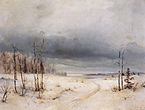
Winter (1870)
-

Sundown over a marsh, 1871
-
Monastery of Caves near Nizhny Novgorod (1871)
-
Rainbow (1873)
-

Spring Day, 1873
-
Rafts (1873)
-
Monastery Gates (1875)
-
Early Spring. Thaw. (1880s)
-
Spring. Kitchen Gardens (1893)
-
Rasputitsa (Sea of Mud, 1894)
O céu nos deu duas coisas para equilibrar as múltiplas misérias da vida: a esperança e o sono. (Heaven gave us two things to balance the multiple miseries of life: hope and sleep.) – Voltaire
It is as if he is the perfect male counterpart to my own self: each of us giving the other an extension of the life we believe in living. – Sylvia Plath
To living a life you believe in with your perfect counterpart,
Mac Tag
Follow us on twitter @cowboycoleridge

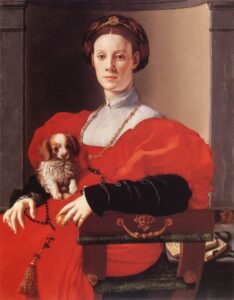





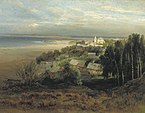
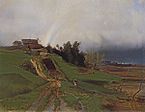


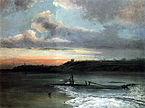
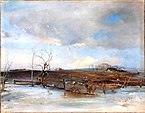
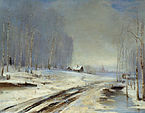
3 Comments on "The Lovers’ Chronicle 24 May – la llorona – art by Pontormo & Alexei Savrasov"
Trackbacks
[...] this day, 24 May the deaths of; David I King of Scots (1153), famed beauty Jane Leveson-Gower Hyde (1725), golfer…
[...] this day, 24 May the deaths of; David I King of Scots (1153), famed beauty Jane Leveson-Gower Hyde (1725), Scottish…
[...] this day, 24 May the deaths of; David I King of Scots (1153), famed beauty Jane Leveson-Gower Hyde (1725), Scottish…